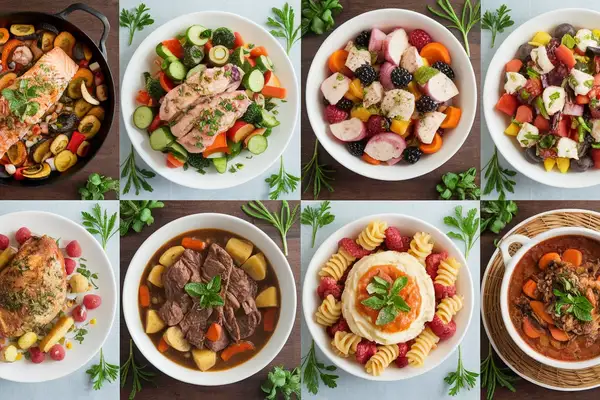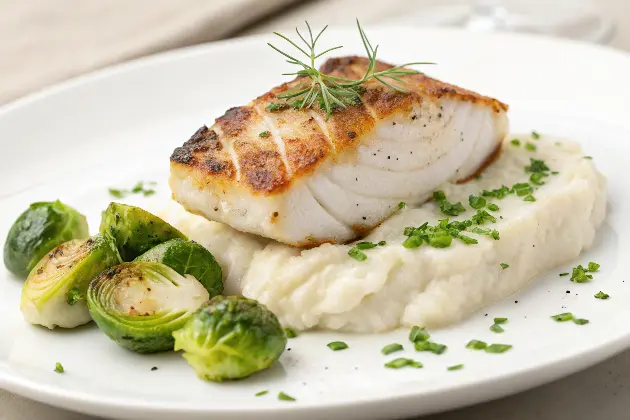Kelly Clarkson Diet Weight Loss | 7-Day Plant Paradox Diet
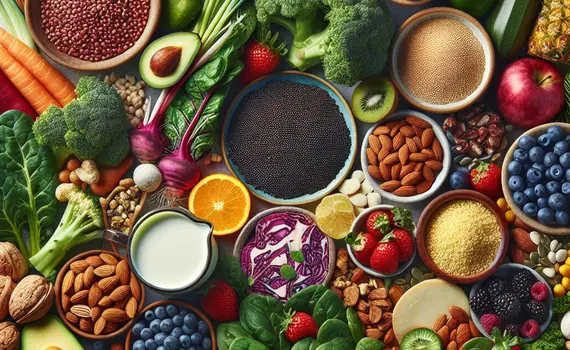
- What is the Plant Paradox Diet?
- The Lectin Controversy
- The Plant Paradox Diet Food List
- Foods to Avoid on the Plant Paradox Diet
- Kelly Clarkson Diet For Weight Loss (7-Day Plant Paradox Diet)
- Day 1:
- Day 2:
- Day 3:
- Day 4:
- Day 5:
- Day 6:
- Day 7:
- The Benefits of the Plant Paradox Diet
- Potential Risks of the Plant Paradox Diet
- Tips for Successful Weight Loss on the Kelly Clarkson Diet
- Other Weight Loss Supplements and Alternatives
- Resources
- Conclusion
- FAQs
This post may contain affiliate links, meaning I may earn a commission if you make a purchase, at no extra cost to you. I only recommend products I trust. Thank you for your support.
Kelly Clarkson, the renowned American singer, songwriter, and television personality, has been open about her weight loss diet tips over the years.
Kelly Clarkson weight loss journey gained significant attention when she revealed that she had lost nearly 40 pounds in the first month by following the Plant Paradox diet and certain medication.
The plant paradox diet advocates eliminating lectins, proteins found in many plant-based foods as Dr. Gundry claims they can cause inflammation, leaky gut, and weight gain.
While Kelly Clarkson weight loss on the Plant Paradox diet has been impressive, the Plant Paradox diet’s effectiveness has been questioned by many healthcare professionals due to its restrictive nature and lack of scientific evidence.
As a public figure, Kelly Clarkson’s diet for weight loss has inspired many of her fans and followers to explore the benefits of the Plant Paradox Diet.
In this article, we will delve into the details of Kelly Clarkson diet for weight loss, the plant paradox diet, the plant paradox diet food list, and provide you with a 7-day Plant Paradox diet to achieve impressive results.
What is the Plant Paradox Diet?
The Plant Paradox Diet is a popular eating plan that advocates eliminating lectins, a type of protein found primarily in legumes, grains, and certain vegetables like tomatoes and eggplants.
The Plant Paradox diet, outlined in Dr. Steven Gundry’s book, advocates eliminating lectins – proteins found in many plant-based foods like legumes, grains, and certain vegetables. Clarkson credited this lectin-free eating plan for her impressive weight loss transformation.
Dr. Gundry outlined in his book that lectins are toxins produced by plants for survival, and consuming them can lead to various complications, including:
- Inflammation
- Intestinal damage such as leaky gut
- Weight gain
- Digestive problems like bloating, diarrhea, and gas
The Lectin Controversy
While some lectins, such as the phytohaemagglutinin found in raw kidney beans, can be harmful if consumed in large quantities.
Many experts argue that the benefits of lectin-containing foods outweigh the potential risks. These foods are often rich in fiber, protein, vitamins, minerals, and antioxidants.
Cooking at high temperatures or soaking in water effectively eliminates most lectin activity, making many lectin-rich foods safe for consumption.
Additionally, research suggests that lectins may have potential benefits, such as acting as antioxidants and slowing down the absorption of carbohydrates, which can help regulate blood sugar levels.
The Plant Paradox Diet Food List
The Plant Paradox Diet is quite restrictive, eliminating many common foods that are considered lectin-rich.
The diet encourages consuming whole, nutrient-dense sources of protein and healthy fats while avoiding lectins.
Here are some of the foods allowed on the Plant Paradox diet:
1. Lectin-Free Grains:
- Millet: Used in porridges and as a rice substitute.
- Sorghum: Can be used in salads, soups, and as a side dish.
- Fonio: Similar to quinoa, great for salads and side dishes.
- Teff: Tiny grain, used in porridge or baking.
2. A2 Dairy Products:
- A2 Milk: Easier to digest for some people.
- Goat Cheese: Chèvre, lower in lactose.
- Buffalo Mozzarella: Made from water buffalo milk.
3. Non-Starchy Vegetables:
- Leafy Greens: Spinach, kale, Swiss chard, arugula.
- Cruciferous Vegetables: Broccoli, cauliflower, Brussels sprouts, cabbage.
- Root Vegetables: Parsnips, turnips, rutabaga.
- Peppers: Bell peppers (peeled and de-seeded).
- Alliums: Onions, garlic, leeks, shallots.
4. Low-Sugar Fruits:
- Berries: Blueberries, strawberries, raspberries, blackberries.
- Avocados: Nutrient-dense fruit.
- Olives: Green olives, black olives, kalamata olives.
- Coconut: Coconut milk, oil.
5. Healthy Fats:
- Oils: Extra virgin olive oil, avocado oil, coconut oil.
- Nuts: Almonds, walnuts, macadamia nuts, pecans.
- Seeds: Chia seeds, flaxseeds, hemp seeds, pumpkin seeds.
6. Sustainably Sourced Proteins:
- Grass-fed beef or ground beef.
- Grass-fed lamb or ground lamb.
- Pasture-raised poultry.
- Free-range eggs or pasture-raised eggs.
- Wild-Caught Fish: Alaskan halibut, sockeye salmon, coho salmon.
- Seafood: Wild Alaskan pollock, pacific albacore tuna.
7. Fermented Foods:
- Sauerkraut: Fermented cabbage, rich in probiotics.
- Kimchi: Spicy fermented vegetables.
- Kefir: Fermented milk drink, beneficial for gut health.
8. Hemp Products:
- Hempeh: Fermented hemp-based protein.
- Hemp Tofu: Alternative to soy tofu.
- Hemp Protein Powder: Used in smoothies and baking.
9. Other Foods:
- Sweet Potatoes: Roasted or mashed.
- Ginger: Fresh or powdered, for its anti-inflammatory properties.
Foods to Avoid on the Plant Paradox Diet
According to Dr. Gundry, the following foods contain lectins or other compounds that should be avoided on the Plant Paradox Diet:
1. Grains:
- Wheat: Bread, pasta, pastries, crackers.
- Rice: White rice, brown rice, sushi rice.
- Corn: Corn on the cob, cornmeal, tortillas, cornflakes.
- Oats: Oatmeal, granola, oat-based snacks.
- Quinoa: Quinoa salads, quinoa flour, quinoa flakes.
- Barley: Barley soup, barley risotto.
- Popcorn: Buttered popcorn, microwave popcorn.
2. Legumes:
- Beans: Black beans, kidney beans, pinto beans, chickpeas.
- Lentils: Green lentils, red lentils, brown lentils.
- Peanuts: Peanut butter, roasted peanuts, peanut oil.
3. Nightshade Vegetables:
- Tomatoes: Fresh tomatoes, tomato sauce, ketchup.
- Potatoes: White potatoes, red potatoes, French fries, potato chips.
- Eggplants: Fresh eggplant, baba ghanoush.
4. Dairy Products:
- A1 Casein Dairy Products: Most cow’s milk products, some cheeses.
- Greek Yogurt: Flavored or plain Greek yogurt.
- American Cheese: Sliced cheese, processed cheese products.
- Cottage Cheese: Low-fat or regular cottage cheese.
5. Processed Foods and Sugars:
- Cookies: Chocolate chip cookies, sugar cookies, Oreos.
- Pastries: Donuts, croissants, danishes.
- Crackers: Saltines, Ritz crackers, graham crackers.
- Grapes: Fresh grapes, grape juice, raisins.
- Ripe Bananas: Fully yellow or spotted bananas, banana smoothies.
6. Seeds:
- Sunflower Seeds: Roasted sunflower seeds, sunflower seed butter.
- Pumpkin Seeds: Pepitas, roasted pumpkin seeds.
- Chia Seeds: Chia puddings, chia snacks.
- Cashews: Raw cashews, cashew butter, cashew milk.
7. Inflammatory Oils:
- Vegetable Oil: Generic vegetable oil used in cooking and baking.
- Soybean Oil: Often found in processed foods and margarine.
- Canola Oil: Used in frying, baking, and as a salad dressing base.
- Corn Oil: Common in processed snacks and cooking.
- Peanut Oil: Used for frying and in Asian cuisine.
- Sunflower Oil: Found in many processed snacks and salad dressings.
8. Squashes:
- Pumpkin: Pumpkin pie, pumpkin puree, roasted pumpkin.
- Zucchini: Zucchini noodles, grilled zucchini, zucchini bread.
- Cucumber: Fresh cucumbers, pickles, cucumber salads.
- Melons: Watermelon, cantaloupe, honeydew.
Kelly Clarkson Diet For Weight Loss (7-Day Plant Paradox Diet)
This Kelly Clarkson diet plan for weight loss is inspired by the Plant Paradox diet.
It includes a variety of nutrient-dense foods and healthy foods while avoiding lectin-rich items, as per the Plant Paradox diet principles.
By avoiding these lectin-rich foods and embracing a diet rich in vegetables, healthy fats, and pasture-raised proteins, you can achieve better health and sustainable weight loss.
Here is the detailed Kelly Clarkson weight loss diet plan inspired by a 7 day plant paradox diet to help you get started:

Day 1:
Breakfast:
- Scrambled free-range eggs with sautéed spinach and garlic
- Fresh blueberries
Lunch:
- Grilled pasture-raised chicken breast on a bed of arugula with olive oil and lemon dressing
- Side of roasted parsnips
Dinner:
- Wild-caught sockeye salmon with a side of steamed broccoli
- Sautéed bell peppers (peeled and de-seeded)
Snack:
- Handful of macadamia nuts

Day 2:
Breakfast:
- Smoothie with A2 milk, strawberries, and hemp protein powder
Lunch:
- Kale salad with goat cheese, walnuts, and sliced avocado
- Drizzled with extra virgin olive oil
Dinner:
- Grass-fed beef steak with a side of roasted rutabaga
- Steamed Brussels sprouts
Snack:
- Coconut meat pieces
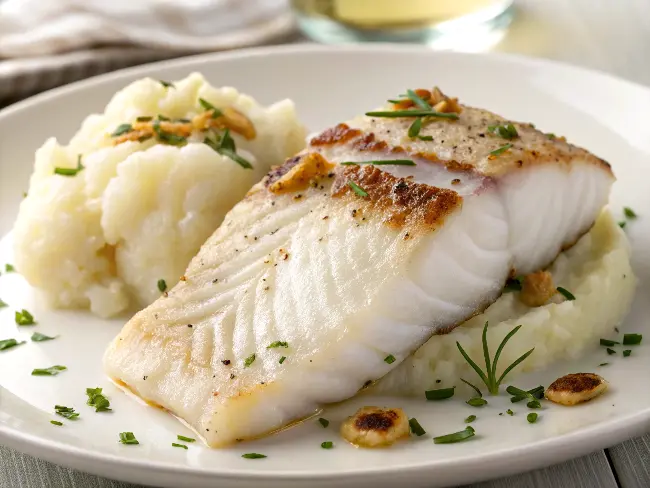
Day 3:
Breakfast:
- Coconut yogurt with raspberries and flaxseeds
Lunch:
- Mixed green salad with Swiss chard, roasted bell peppers, and pumpkin seeds
- Dressing of avocado oil and lemon
Dinner:
- Wild Alaskan pollock fillet with a side of cauliflower mash
- Sautéed onions and garlic
Snack:
- Slices of fresh cucumber
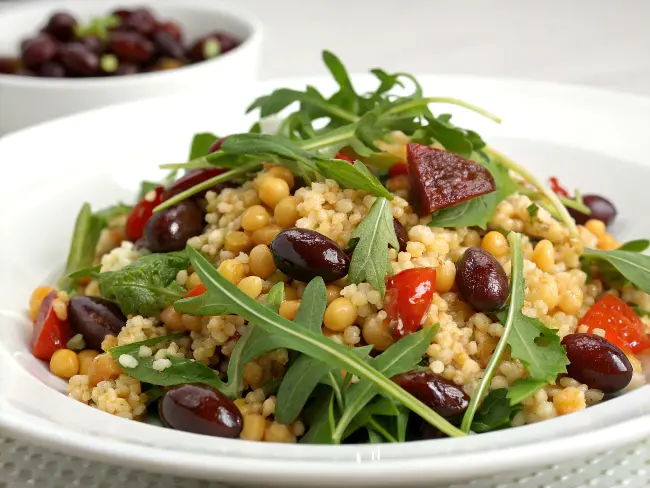
Day 4:
Breakfast:
- Millet porridge with a sprinkle of chia seeds and sliced almonds
Lunch:
- Sorghum salad with arugula and kalamata olives
- Dressing of extra virgin olive oil and balsamic vinegar
Dinner:
- Pasture-raised turkey breast with a side of roasted turnips
- Steamed cabbage
Snack:
- Fresh blackberries

Day 5:
Breakfast:
- Scrambled pasture-raised eggs with sautéed leeks and a side of avocado slices
Lunch:
- Grilled grass-fed lamb chop with a side of fennel and arugula salad
- Drizzled with lemon and olive oil
Dinner:
- Wild-caught coho salmon with a side of roasted sweet potatoes
- Sautéed mushrooms and garlic
Snack:
- Handful of pecans
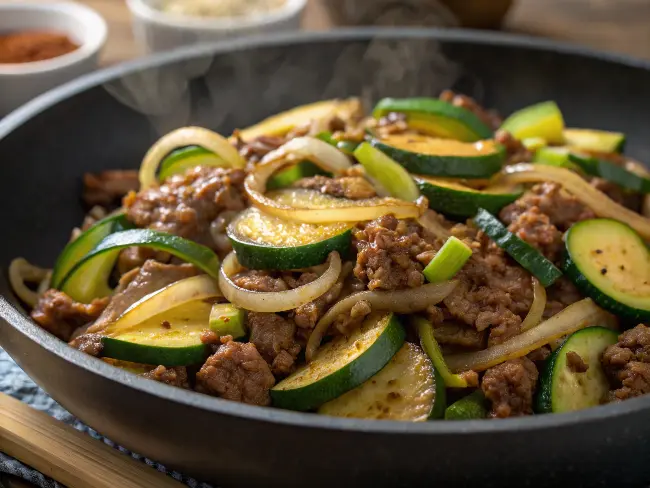
Day 6:
Breakfast:
- Smoothie with coconut milk, blueberries, and hemp protein powder
Lunch:
- Mixed greens with Swiss chard, goat cheese, olives, and flaxseeds
- Dressing of extra virgin olive oil and apple cider vinegar
Dinner:
- Grass-fed ground beef stir-fried with onions, garlic, and zucchini (peeled and de-seeded)
- Side of roasted beets
Snack:
- Slices of fresh kiwi
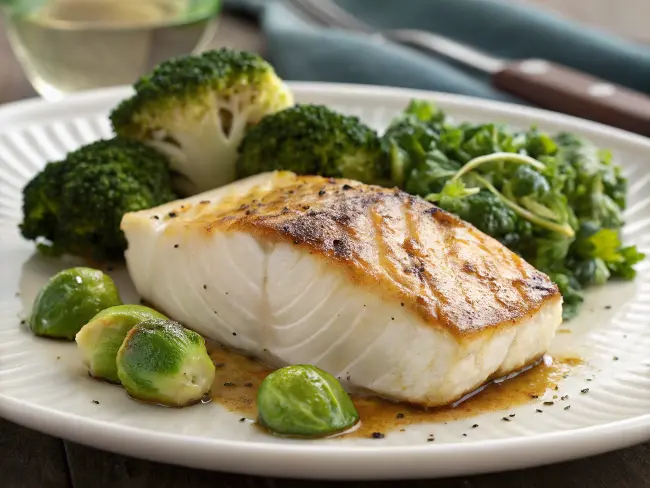
Day 7:
Breakfast:
- Teff porridge with a sprinkle of hemp seeds and raspberries
Lunch:
- Grilled pasture-raised chicken thighs on a bed of spinach and garlic
- Side of roasted carrots
Dinner:
- Wild-caught Alaskan halibut with a side of steamed broccoli and Brussels sprouts
- Sautéed shallots
Snack:
- Sauerkraut
The Benefits of the Plant Paradox Diet
Adopting the Plant Paradox Diet can provide a wide range of benefits for individuals looking to improve their overall health and achieve sustainable weight loss.
Some of the key benefits include:
1. Reduced Inflammation:
- By avoiding foods high in lectins, which are plant proteins that can contribute to inflammation, the Plant Paradox Diet aims to reduce inflammation in the body.
2. Weight Management:
- The diet encourages the consumption of healthy fats, proteins, and fiber-rich vegetables, which can contribute to satiety and help control appetite and achieve and sustainable weight loss.
3. Improved Gut Health:
- The Plant Paradox Diet focuses on gut-friendly foods like leafy greens, non-nightshade vegetables, and lean proteins, which can support a healthy gut microbiome.
4. Balanced Blood Sugar Levels:
- By focusing on low-lectin, nutrient-dense foods like vegetables, healthy fats, and lean proteins, the diet can help regulate blood sugar levels and improve insulin sensitivity.
5. Improved Energy and Vitality:
- Eating a diet rich in vitamins, minerals, antioxidants, unprocessed foods, and phytonutrients can boost energy levels and overall vitality leading to improved physical and mental performance.
6. Heart Health:
- The Plant Paradox Diet promotes foods that are rich in omega-3 fatty acids, antioxidants, and anti-inflammatory compounds, which can help lower cholesterol levels, reduce blood pressure, and protect against cardiovascular disease.
7. Potential Autoimmune Benefits:
- While more research is needed, some proponents of the Plant Paradox Diet believe that reducing lectin intake may benefit individuals with autoimmune conditions.
Potential Risks of the Plant Paradox Diet
While the Plant Paradox Diet has gained popularity for its potential health benefits, it’s important to be aware of potential risks and considerations associated with this eating approach. Here are some potential risks of the Plant Paradox Diet:
1. Nutrient Deficiencies:
- The Plant Paradox Diet restricts or limits the consumption of certain foods, such as grains, legumes, and nightshade vegetables, which are sources of essential nutrients like fiber, vitamins, and minerals.
2. Lack of Long-Term Research:
- More studies are needed to evaluate the diet’s long-term effects on weight management, cardiovascular health, gut microbiome, and overall well-being.
3. Potential for Disordered Eating:
- Any restrictive diet, including the Plant Paradox Diet, can potentially contribute to disordered eating patterns, such as orthorexia (obsession with healthy eating) or binge eating.
4. Difficulty Sustaining Long-Term Compliance:
- The strictness of the Plant Paradox Diet, which involves avoiding many common foods, may make it challenging for some individuals to sustain long-term compliance.
5. Impact on Gut Microbiome:
- Limiting certain high-fiber foods and prebiotics found in grains and legumes may alter the gut ecosystem, potentially affecting digestion, immune function, and overall gut health.
Tips for Successful Weight Loss on the Kelly Clarkson Diet
To ensure a successful weight loss journey on the Plant Paradox Diet, it’s important to keep the following tips in mind:
- Gradual Transition: Introduce the diet’s principles gradually to allow your body to adapt to the changes. Sudden and drastic changes can be challenging to sustain.
- Meal Preparation: Plan and prepare your meals in advance to ensure you have access to the right foods and avoid temptation from less healthy options.
- Hydration: Drink plenty of water throughout the day to support your body’s natural detoxification processes and keep you feeling full.
- Mindful Eating: Slow down and savor your meals, paying attention to your body’s hunger and fullness cues to avoid overeating.
- Regular Exercise: Incorporate a regular exercise routine to complement the diet and support overall health and weight loss.
- Patience and Persistence: Sustainable weight loss takes time, so be patient and persistent with your efforts. Celebrate small victories along the way.
Other Weight Loss Supplements and Alternatives
While the Plant Paradox Diet is the primary focus of this article, it’s important to note that there are other weight loss supplements and alternatives available on the market.
However, it’s crucial to approach these options with caution and to consult with a healthcare professional before incorporating them into your routine.
Some popular weight loss supplements and alternatives include:
- Probiotics
- Omega-3 fatty acids
- Green tea extract
- Chromium
- Glucomannan
- Conjugated linoleic acid (CLA)
Resources
- The Plant Paradox Family Cookbook: 80 One-Pot Recipes
- The Plant Paradox Quick and Easy 30 Day Plan to Lose Weight
- Review of the Plant Paradox Diet for Weight Loss
Conclusion
In essence, the Plant Paradox Diet has garnered significant attention, largely due to Kelly Clarkson’s weight loss.
However, it’s crucial to remember that her primary motivation was to address her health issues, including a thyroid condition and an autoimmune disease.
The diet’s lectin-free approach may have contributed to her improved bloodwork and alleviated the need for medication, leading to her remarkable transformation.
While the Plant Paradox Diet has its proponents, it’s essential to approach it with a balanced perspective. Like many restrictive diets, it may offer benefits for some individuals, but it also carries potential drawbacks.
For instance, eliminating entire food groups could lead to nutrient deficiencies or make the diet challenging to sustain long-term.
As with any significant dietary change, it’s advisable to consult with a healthcare professional to determine if the Plant Paradox Diet aligns with your individual needs and goals.
- How much is ozempic without insurance?
- Taylor swift diet and workout routine
- 1600 high protein calorie diet for weight loss
- Is corn good for weight loss?
- 50 soft foods to eat after tooth extraction
- Does ozempic need to be refrigerated?
- Foods to avoid while on Saxenda
- How to stop GERD cough instantly
- How to make sea moss gel
- 7-day meal plan for cancer patients
- Foods to avoid with pituitary tumor
- 17 foods to avoid while breastfeeding
- Foods to avoid with a UTI
- Foods to avoid on Contrave
FAQs
What is the Plant Paradox Diet?
The Plant Paradox Diet is a nutritional plan that suggests the elimination of foods high in lectins (proteins found in many common foods) which are believed to contribute to a range of health issues, including obesity and inflammation.
What is the Kelly Clarkson Diet?
The Kelly Clarkson Diet refers to the Plant Paradox Diet, which she has credited for her successful weight loss. The diet focuses on reducing the consumption of lectin-rich foods and emphasizes nutrient-dense, low-lectin ingredients.
Is the Kelly Clarkson Diet the same as the Keto Diet?
No, the Kelly Clarkson Diet, which is based on the Plant Paradox Diet, is not the same as the Keto Diet. While both diets may share some similarities in their emphasis on low-carb and high-fat foods, the Plant Paradox Diet has a specific focus on reducing lectin intake.
How long does it take to see results on the Kelly Clarkson Diet?
The time it takes to see results on the Plant Paradox Diet can vary depending on individual factors, such as starting weight, overall health, and adherence to the diet.
Many people report experiencing benefits, such as reduced inflammation and improved digestion, within the first few weeks of starting the diet, with more significant weight loss occurring over a longer period.
Are there any supplements or gummies associated with the Kelly Clarkson Diet?
While there have been some unsubstantiated claims about “Kelly Clarkson Keto Gummies” or “Kelly Clarkson Keto Pills,” these products are not officially affiliated with Clarkson or the Plant Paradox Diet.
Disclaimer: The information provided about the Kelly Clarkson diet is for educational purposes only. It is not intended to replace professional medical advice, diagnosis, or treatment.
Always seek the advice of your nutritionist or qualified healthcare provider before starting any new dietary or lifestyle changes.

